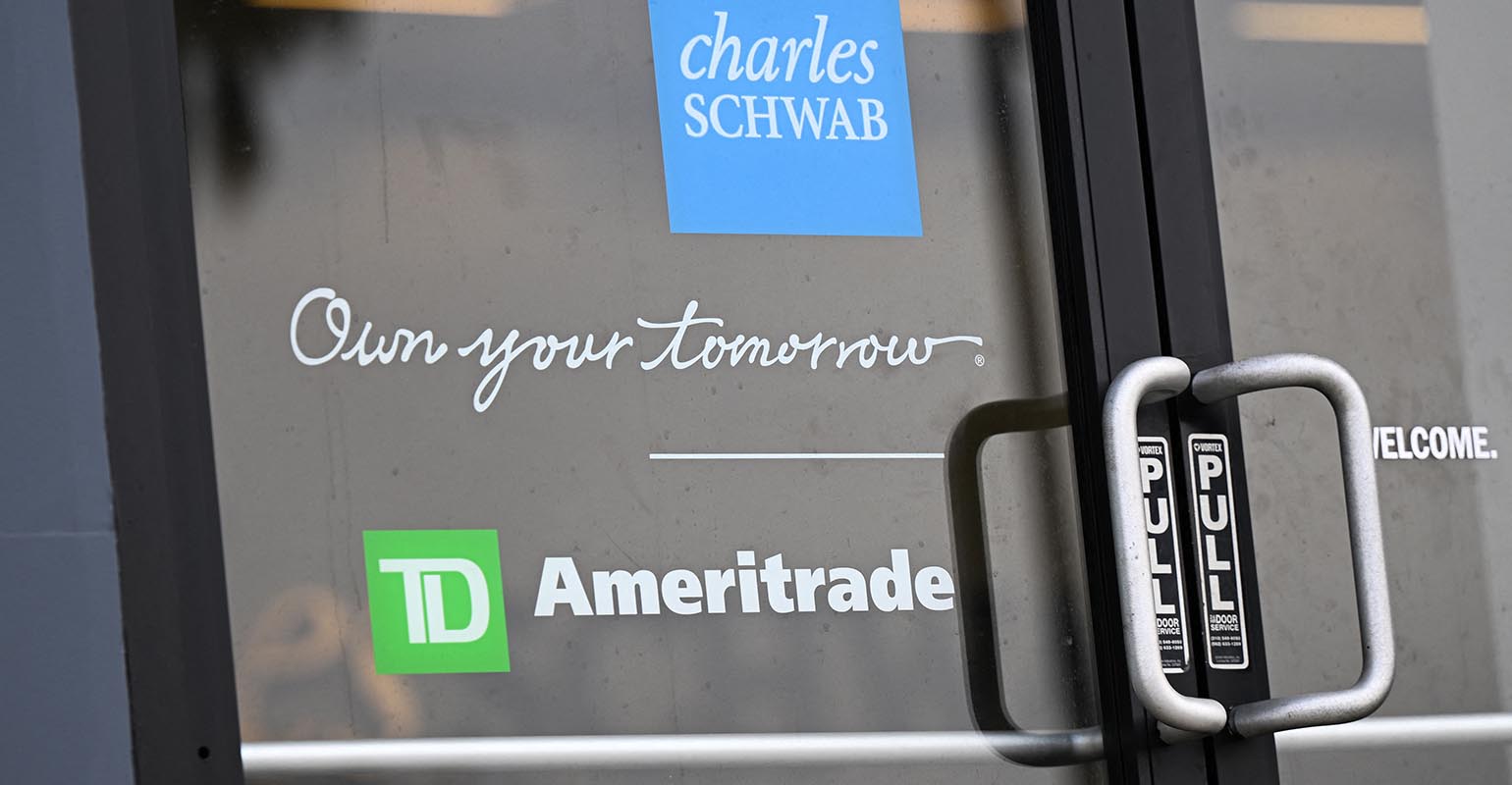
[ad_1]
(Bloomberg) — Charles Schwab Corp. saw $8.8 billion in net outflows from its prime money market funds this week as investors rattled by turmoil at US banks plowed even more money into the brokerage’s other portfolios that favor assets with government backing.
Clients moved money from two Schwab Value Advantage Money funds, which had a combined $195 billion of assets as of March 15, representing the largest redemptions in at least six months, according to company data compiled by Bloomberg. The data cover the three days through March 15.
Amid wild gyrations in financial markets, the shift in client assets isn’t likely to jeopardize Schwab. The firm’s own government and Treasury funds had inflows in each of the same three days totaling about $14 billion, according to the company’s data.
The shifts represent clients focused on safety who are moving from prime money funds to government money funds – “all within Schwab,” Mike Peterson, a company spokesman, said via email. “Those shifts from one category to the other happen all the time. This one is larger, but is part of a broader industry trend and is not unique to Schwab.”
Wider Trend
The flows at Schwab match the pattern in data from the Investment Company Institute, which show prime fund assets decreased by $18 billion industrywide for the week ending March 15, while total money market fund assets increased by $121 billion.
While outflows from funds are a risk for Schwab, the overall franchise remains healthy, according to a Bloomberg Intelligence report. “Schwab’s stronger base of mostly FDIC-insured retail deposits is a key support from contagion outflows,” wrote analysts led by Neil Sipes.
Prime funds differ from government and Treasury money market funds, which have grown in popularity since the financial crisis of 2008 and since the market rout at the onset of the pandemic in 2020.
Prime Flows
The prime fund outflows started after a weekend in which Silicon Valley Bank and Signature Bank failed, and investors scrambled to assess firms including First Republic Bank and PacWest Bancorp. Schwab’s banking unit had $14 billion in unrealized losses in its portfolio of held-to-maturity assets at the end of 2022, leading company executives to seek to reassure investors this week that it has sufficient liquidity to overcome market volatility.
“Though its larger exposure to fixed-rate securities does resemble that of fallen SVB, we see the risk of unrealized losses materializing as tempered by Fed relief and Schwab’s ability to generate liquidity organically,” according to Bloomberg Intelligence.
Read more: Schwab Rallies as CEO Bettinger Says He Bought 50,000 Shares
Schwab’s money market funds are stress-tested for their exposure to interest rate changes and have daily and weekly liquidity levels above regulatory requirements, according to Peterson.
Schwab’s shares traded as low as $45 on March 13, their lowest intraday price in more than two years. They are down about 24% since March 8, when depositors fled Silicon Valley Bank and questions mounted about the wider financial system. The stock fell 2.8% to $57.88 in regular New York trading Thursday.
The Schwab funds are among the largest prime money funds in the US, a product that typically invests in securities issued by financial institutions and non-financial companies. Prime funds are a source of capital for many of the world’s largest financial institutions, and the Schwab funds held certificates of deposit from Deutsche Bank AG and Truist Bank as well as commercial paper issued by units of Citigroup Inc. and Bank of America Corp., according to fund documents.
Investors have rushed into Treasury and government money market funds in the last week, pushing combined money fund assets to a record $5.39 trillion as of March 15, according to Crane Data, a firm that specializes in monitoring the industry.
“We are experiencing inflows across the board, generally into all of our liquidity products,” Deborah Cunningham, chief investment officer for global liquidity markets at Federated Hermes Inc., said in an email. “It seems to be coming from bank deposit products more than anything else.”
[ad_2]






